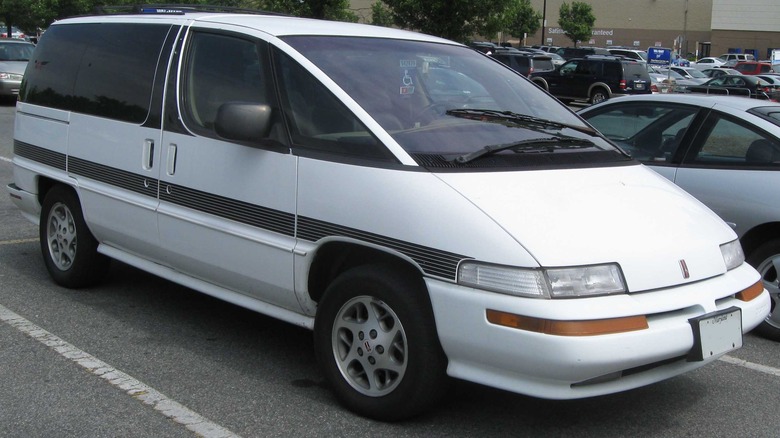Do You Remember Oldsmobile's Strange Luxury Minivan, The Silhouette?
The Oldsmobile Silhouette was launched in 1989 as a slightly fancier alternative to mechanically identical vans from Pontiac and Chevrolet. The first generation was a fairly important model for Oldsmobile as it was the manufacturer's first foray into the growing minivan segment dominated by Chrysler, but it is also a textbook example of a badge-engineered General Motors car.
It was nearly identical to the Pontiac Trans Sport and the Chevrolet Lumina APV, only distinguishable from the outside by its different grille, badges, and wheels. The Silhouette's interior was nearly identical, with minor differences like Oldsmobile Silhouette logos embossed into a piece of trim on the doors and a different steering wheel.
At launch, the first-generation Silhouette had a 3.1-liter V6 engine with just 120 horsepower. Oldsmobile added a more powerful 3.8-liter V6 as an option in 1992, and in 1995, it replaced both engines with a 3.4-liter capable of 185 horsepower.
Optional luxury features included leather upholstery, a power-operated sliding door, a premium sound system, and even a level ride pack that added a compressor connected to the rear shock absorbers to help the car stay level when loaded. You could even get it with a built-in child seat that folds away to reveal a regular-size seat.
There is definitely a cyber element to the Oldsmobile Silhouette's design, but it doesn't look anything like the recently unveiled Tesla Cybertruck. It looks much more like the Hyundai Staria minivan, another modern vehicle with a cyber-infused design.
The Second Generation Was Far More Normal
The Oldsmobile Silhouette was an experiment that ultimately didn't pay out for General Motors, so it ended production of the first-generation model in 1996. The second-generation Silhouette arrived in 1997 and completely abandoned its predecessor's futuristic look for something far more restrained and inoffensive.
It was a much better and safer vehicle in every way, but it had a generic appearance, almost like a Japanese car from the front. It also looked more like the successful minivans Chrysler was manufacturing, showing that GM was still trying to imitate its rival's success.
GM made it a bit narrower and smaller overall for the second generation, making it a better fit for roads outside North America. The first generation saw some sales success in Europe (as the Pontiac Trans Sport), and GM hoped that the second-generation model's more conventional styling would help it find more European buyers, too.
The second-generation Silhouette has no chance of becoming a future classic precisely because it looks like every other car. However, a well-looked-after first-generation example might become a prized classic one day because of its daring Dustbuster design.

